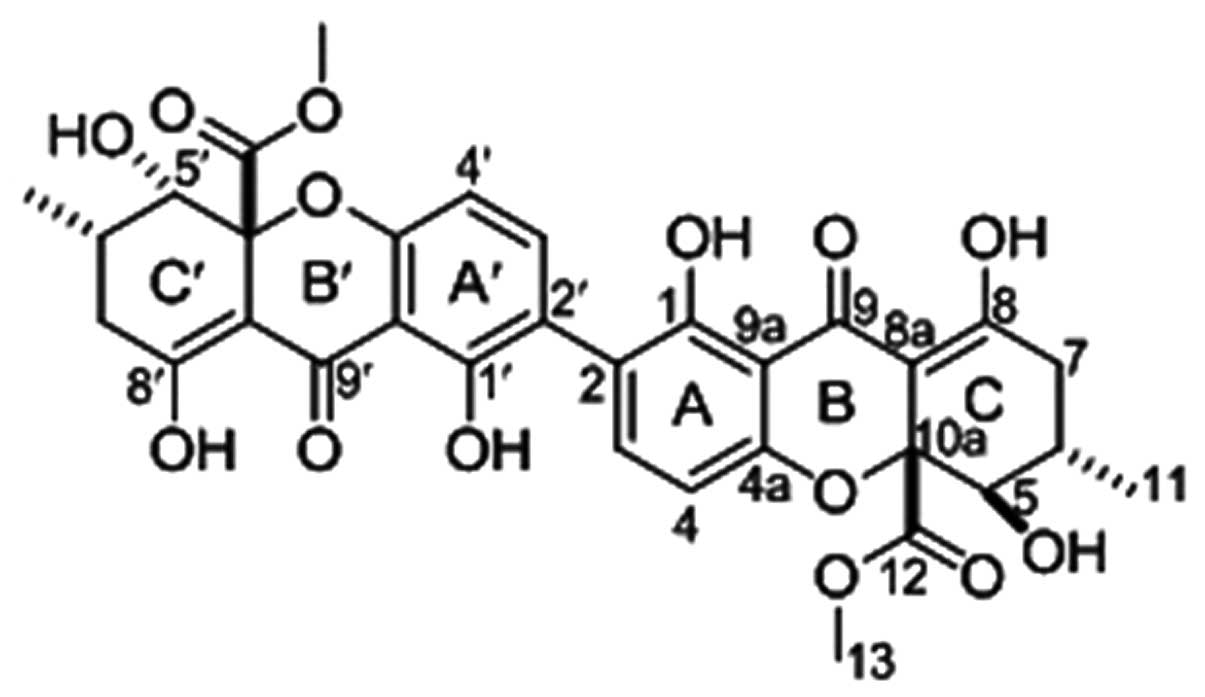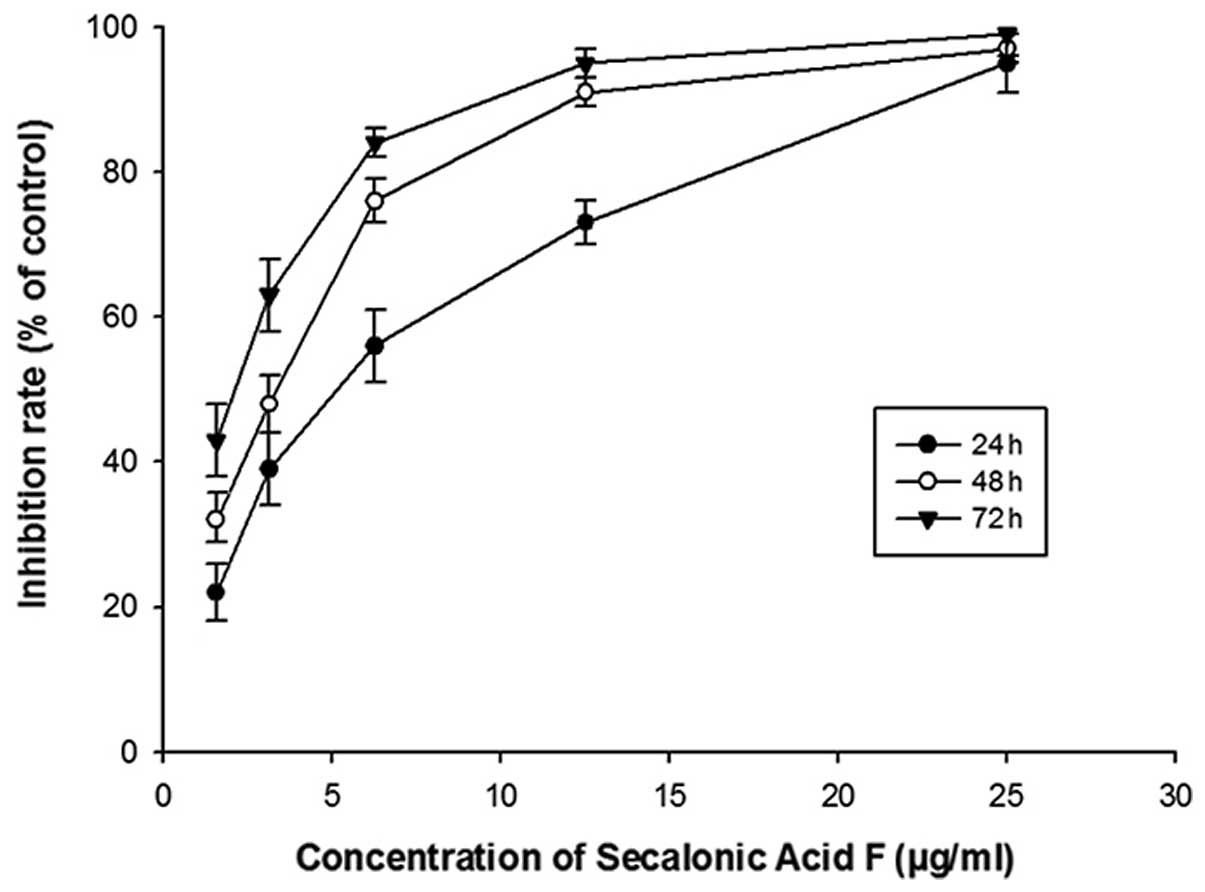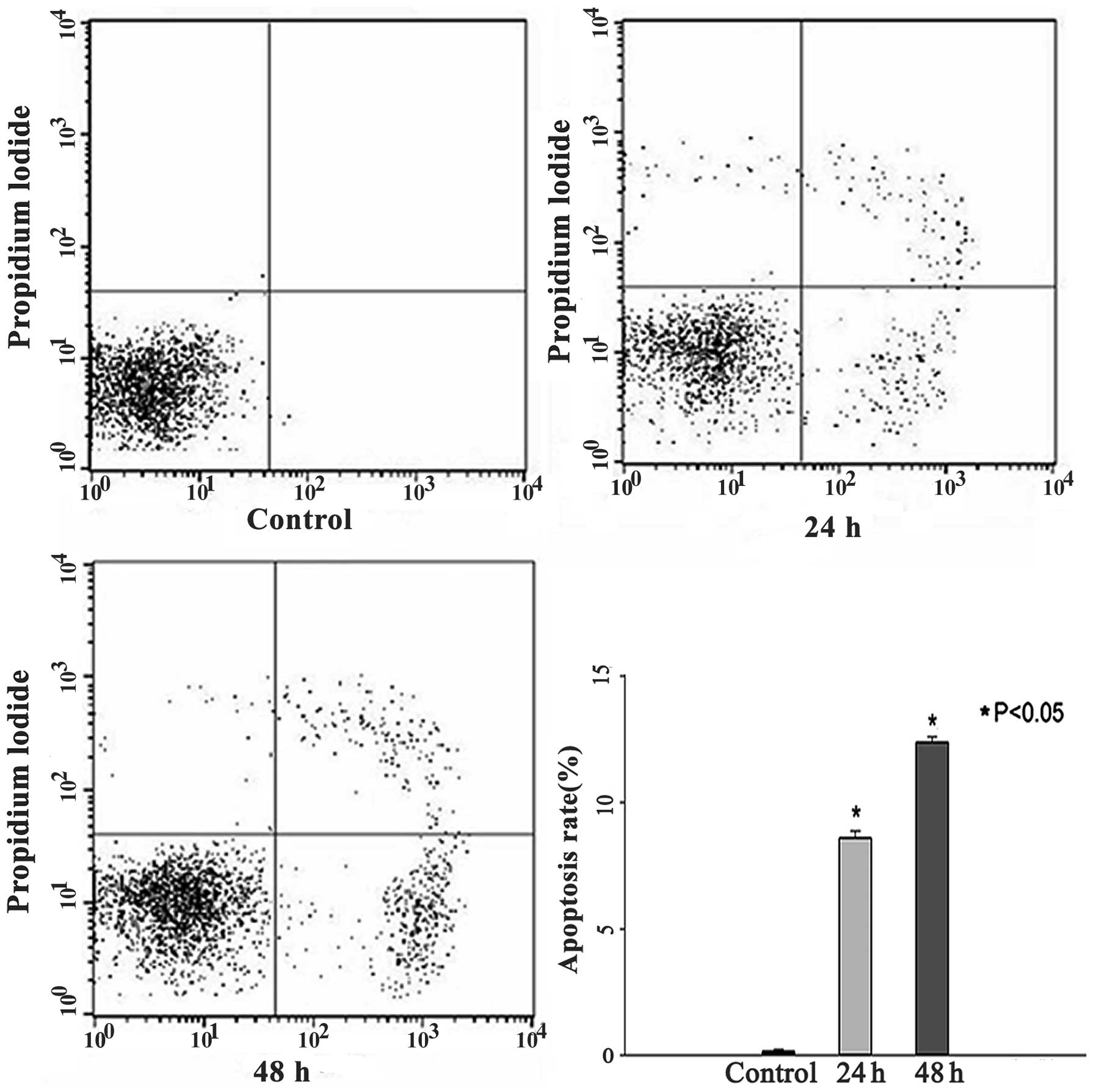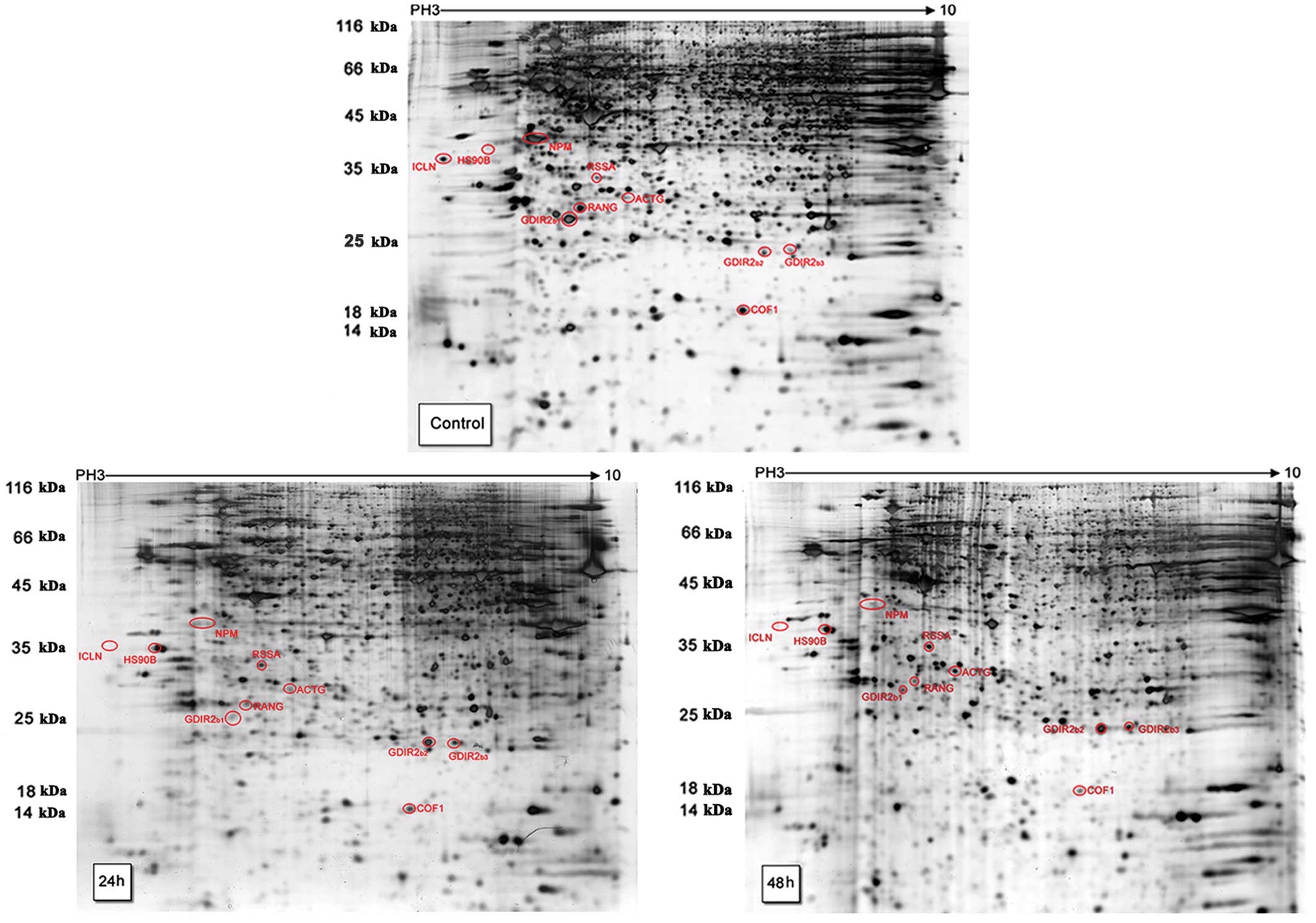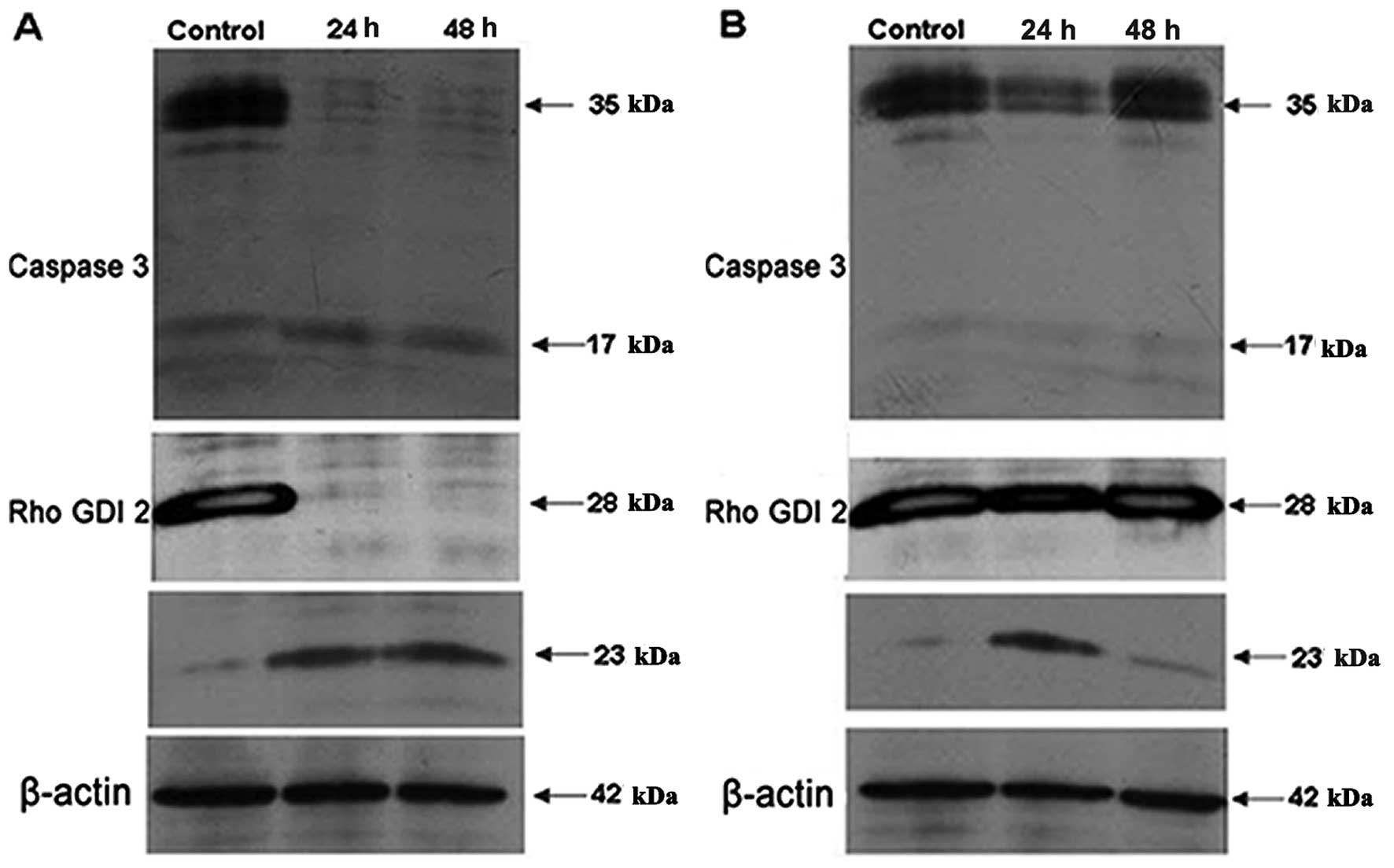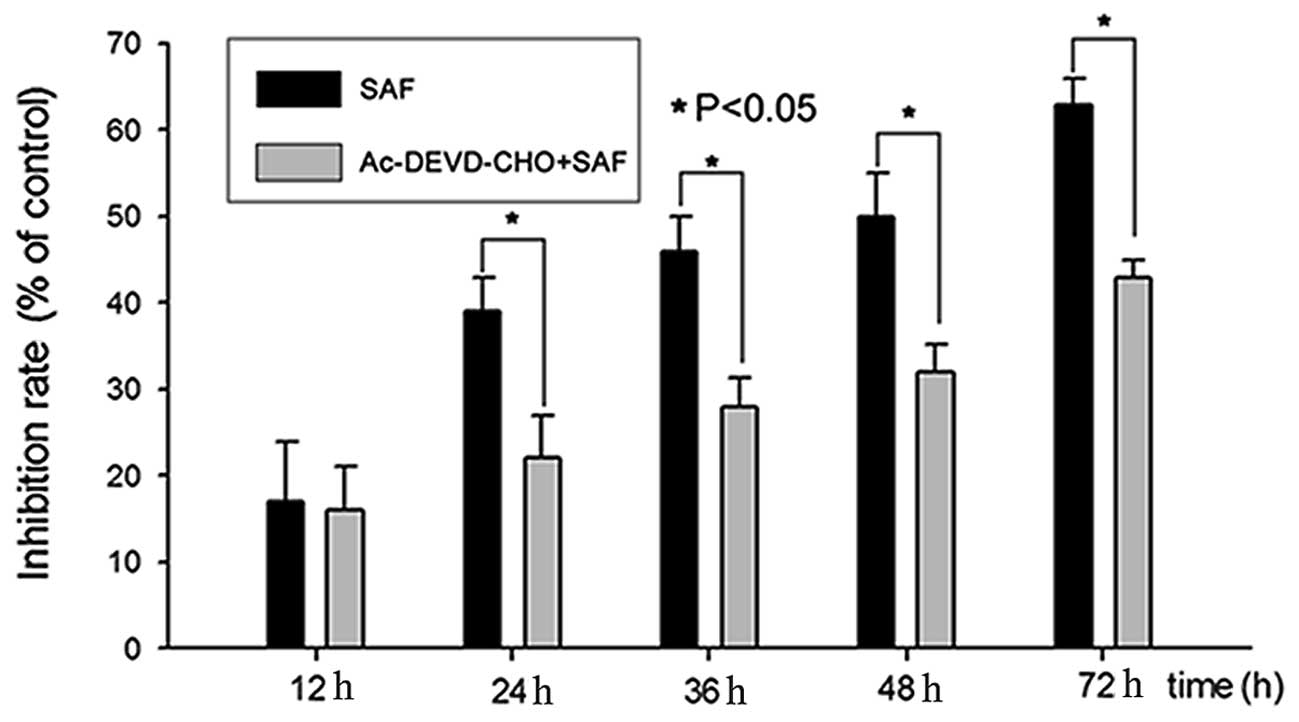|
1
|
Yayanos AA: Microbiology to 10,500 meters
in the deep sea. Annu Rev Microbiol. 49:777–805. 1995. View Article : Google Scholar : PubMed/NCBI
|
|
2
|
Zähner H and Fiedler HP: The need for new
antibiotics: possible ways forward. Fifty Years of Antimicrobials:
Past Perspectives and Future Trends. Hunter PA, Darby GK and
Russell NJ: Cambridge University Press; Cambridge: pp. 67–85.
1995
|
|
3
|
Zhang L, An R, Wang J, et al: Exploring
novel bioactive compounds from marine microbes. Curr Opin
Microbiol. 8:276–281. 2005. View Article : Google Scholar : PubMed/NCBI
|
|
4
|
Gautschi JT, Amagata T, Amagata A,
Valeriote FA, Mooberry SL and Crews P: Expanding the strategies in
natural product studies of marine-derived fungi: a chemical
investigation of Penicillium obtained from deep water
sediment. J Nat Prod. 67:362–367. 2004. View Article : Google Scholar : PubMed/NCBI
|
|
5
|
Li D, Wang F, Cai S, et al: Two new
bisorbicillinoids isolated from a deep-sea fungus,
Phialocephala sp FL30r. J Antibiot (Tokyo). 60:317–320.
2007. View Article : Google Scholar : PubMed/NCBI
|
|
6
|
Du L, Feng T, Zhao B, et al: Alkaloids
from a deep ocean sediment-derived fungus Penicillium sp and
their antitumor activities. J Antibiot (Tokyo). 63:165–170. 2010.
View Article : Google Scholar : PubMed/NCBI
|
|
7
|
Zhuang P, Tang XX, Yi ZW, Qiu YK and Wu Z:
Two new compounds from marine-derived fungus Penicillium sp
F11. J Asian Nat Prod Res. 14:197–203. 2012. View Article : Google Scholar : PubMed/NCBI
|
|
8
|
Hong R: Secalonic acid D as a novel DNA
topoisomerase I inhibitor from marine lichen-derived fungus
Gliocladium sp T31. Pharm Biol. 49:796–799. 2011. View Article : Google Scholar : PubMed/NCBI
|
|
9
|
Liao G, Zhou J, Wang H, et al: The cell
toxicity effect of secalonic acid D on GH3 cells and the related
mechanisms. Oncol Rep. 23:387–395. 2010.PubMed/NCBI
|
|
10
|
Zhang JY, Tao LY, Liang YJ, et al:
Secalonic acid D induced leukemia cell apoptosis and cell cycle
arrest of G(1) with involvement of GSK-3β/β-catenin/c-Myc pathway.
Cell Cycle. 8:2444–2450. 2009.PubMed/NCBI
|
|
11
|
Dhulipala VC, Maddali KK, Welshons WV and
Reddy CS: Secalonic acid D blocks embryonic palatal mesenchymal
cell-cycle by altering the activity of CDK2 and the expression of
p21 and cyclin E. Birth Defects Res B Dev Reprod Toxicol.
74:233–242. 2005. View Article : Google Scholar : PubMed/NCBI
|
|
12
|
Asif AR, Armstrong VW, Voland A, Wieland
E, Oellerich M and Shipkova M: Proteins identified as targets of
the acyl glucuronide metabolite of mycophenolic acid in kidney
tissue from mycophenolate mofetil treated rats. Biochimie.
89:393–402. 2007. View Article : Google Scholar : PubMed/NCBI
|
|
13
|
Towbin H, Staehelin T and Gordon J:
Electrophoretic transfer of proteins from polyacrylamide gels to
nitrocellulose sheets: procedure and some applications. Proc Natl
Acad Sci USA. 76:4350–4354. 1979. View Article : Google Scholar : PubMed/NCBI
|
|
14
|
Jemal A, Bray F, Center MM, Ferlay J, Ward
E and Forman D: Global cancer statistics. CA Cancer J Clin.
61:69–90. 2011. View Article : Google Scholar
|
|
15
|
Dovas A and Couchman JR: RhoGDI: multiple
functions in the regulation of Rho family GTPase activities.
Biochem J. 390:1–9. 2005. View Article : Google Scholar : PubMed/NCBI
|
|
16
|
DerMardirossian C and Bokoch GM: GDIs:
central regulatory molecules in Rho GTPase activation. Trends Cell
Biol. 15:356–363. 2005. View Article : Google Scholar : PubMed/NCBI
|
|
17
|
Dransart E, Olofsson B and Cherfils J:
RhoGDIs revisited: novel roles in Rho regulation. Traffic.
6:957–966. 2005. View Article : Google Scholar : PubMed/NCBI
|
|
18
|
Scherle P, Behrens T and Staudt LM:
Ly-GDI, a GDP-dissociation inhibitor of the RhoA GTP-binding
protein, is expressed preferentially in lymphocytes. Proc Natl Acad
Sci USA. 90:7568–7572. 1993. View Article : Google Scholar : PubMed/NCBI
|
|
19
|
Sasaki T and Takai Y: The Rho small G
protein family-Rho GDI system as a temporal and spatial determinant
for cytoskeletal control. Biochem Biophys Res Commun. 245:641–645.
1998. View Article : Google Scholar : PubMed/NCBI
|
|
20
|
Cho HJ, Baek KE and Yoo J: RhoGDI2 as a
therapeutic target in cancer. Expert Opin Ther Targets. 14:67–75.
2010. View Article : Google Scholar : PubMed/NCBI
|
|
21
|
Na S, Chuang TH, Cunningham A, et al:
D4-GDI, a substrate of CPP32, is proteolyzed during Fas-induced
apoptosis. J Biol Chem. 271:11209–11213. 1996. View Article : Google Scholar : PubMed/NCBI
|
|
22
|
Heller T, Asif AR, Petrova DT, et al:
Differential proteomic analysis of lymphocytes treated with
mycophenolic acid reveals caspase 3-induced cleavage of rho GDP
dissociation inhibitor 2. Ther Drug Monit. 31:211–217. 2009.
View Article : Google Scholar : PubMed/NCBI
|
|
23
|
Kwon KB, Park EK, Ryu DG and Park BH:
D4-GDI is cleaved by caspase-3 during daunorubicin-induced
apoptosis in HL-60 cells. Exp Mol Med. 34:32–37. 2002. View Article : Google Scholar : PubMed/NCBI
|
|
24
|
Essmann F, Wieder T, Otto A, Muller EC,
Dorken B and Daniel PT: GDP dissociation inhibitor D4-GDI (Rho-GDI
2), but not the homologous rho-GDI 1, is cleaved by caspase-3
during drug-induced apoptosis. Biochem J. 346(Pt 3): 777–783. 2000.
View Article : Google Scholar : PubMed/NCBI
|
|
25
|
Choi MR, Groot M and Drexler HC:
Functional implications of caspase-mediated RhoGDI2 processing
during apoptosis of HL60 and K562 leukemia cells. Apoptosis.
12:2025–2035. 2007. View Article : Google Scholar : PubMed/NCBI
|
|
26
|
Krieser RJ and Eastman A: Cleavage and
nuclear translocation of the caspase 3 substrate Rho
GDP-dissociation inhibitor, D4-GDI, during apoptosis. Cell Death
Differ. 6:412–419. 1999. View Article : Google Scholar : PubMed/NCBI
|















